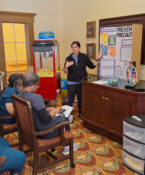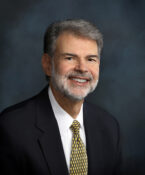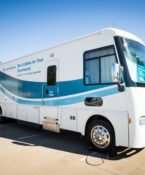Eliminating diabetic foot ulcers, one step at a time
Every footstep is a risk for diabetics like Rudolph Blancarte.
Because diabetes can cause people to lose sensation in their feet, they often don’t feel pain from a developing wound. Something as innocuous as a pebble in their shoe can lead to a serious infection.
"The first time it happened, my foot swelled like a balloon and I couldn’t walk," said Blancarte, 56, of Fort Worth. "The second time, it turned into an abscess. It can be pretty miserable."
Metin Yavuz hopes to help end that misery. Dr. Yavuz, Assistant Professor of Physical Therapy at UNT Health Science Center, is studying the forces that contribute to diabetic foot wounds, also known as ulcers, with the goal of designing devices that protect against them. He’s putting his Doctorate in Engineering to work as part of an interprofessional approach to addressing complex medical problems.
Between 12 percent and 25 percent of diabetics develop an ulcer in their lifetime, Dr. Yavuz said. About 100,000 amputations are performed in the U.S. annually because of diabetic ulcers, at a cost of nearly $30 billion.
Currently available shoe inserts designed for diabetics too often are ineffective, Dr. Yavuz said. While research has generally focused on vertical forces that contribute to foot ulcers, Yavuz is interested in horizontal forces, also known as shear forces.
To measure these forces, Dr. Yavuz puts research participants like Blancarte on a unique electronic walkway.
"We live in a three-dimensional world," Dr. Yavuz said. "And three-dimensional forces are acting underneath the foot. If we can confirm that horizontal forces are a big factor, we could design much more effective devices to prevent these ulcers from occurring."
Dr. Yavuz’s research, which is funded by a grant from the National Institutes of Health, has been recognized by the American Society of Biomechanics.

![Uyen Sa Nguyen Scaled[58]](https://www.unthsc.edu/newsroom/wp-content/uploads/sites/16/Uyen-Sa-Nguyen-scaled58-145x175.jpg)



Social media